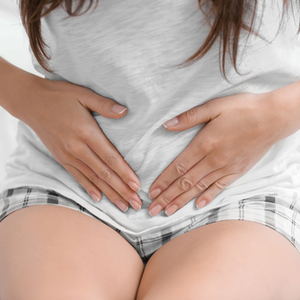
What is endometriosis?
Endometriosis is a widespread abdominal disease in women. In this case, there is an accumulation of tissue outside the uterus, the so-called "endometriosis foci". Often, conventional endometriosis does not cause any symptoms, whereas chronic endometriosis causes severe pain and can reduce fertility. Because endometriosis is often mistaken for severe menstrual pain, it can usually take up to a year before a diagnosis is made.
Where does endometriosis develop?
Endometriosis can develop outside the uterus or in a fallopian tube. In addition, endometriosis also affects the associated connective tissue, the ovaries, the area between the uterus and the rectum (the so-called Douglas space). If the ovaries or the fallopian tubes are affected by endometriosis, fertility is also often impaired. Rather rarely, endometriosis lesions can also affect other organs such as the bladder or intestines, which inevitably leads to problems with bowel movements or urination.
What causes endometriosis?
During each menstrual cycle, the lining of the uterus builds up. Menstruation causes this mucous membrane to detach. An endometriosis foci behaves in a similar way. During the first half of the menstrual cycle, the endometriosis focus grows and is eventually shed. However, the tissue cannot drain out of the abdominal cavity. This in turn can lead to adhesions, inflammation or the formation of a cyst. A cyst is a blister that is filled with fluid and forms in the tissue. Depending on where the endometriosis foci originate, different degrees of pain can be triggered.
So far, doctors do not know why endometriosis develops. However, it is assumed that besides a hormonal and familial predisposition, the immune system also plays a role in the development of endometriosis that should not be underestimated. In the case of endometriosis, the body's own defence system is disturbed, so that tissue from a certain organ can manifest itself in other parts of the body. This suggests that an intact immune system is fundamental to avoiding endometriosis.
What is the course of endometriosis?
Normally, on average, women often suffer from endometriosis during their fertile years. However, endometriosis is rather rare before the first menstruation and/or after the menopause. Endometriosis can also disappear spontaneously without treatment. As a rule, the symptoms of endometriosis disappear after the last menstruation, i.e. with the onset of the menopause. Endometriosis can, however, develop mild symptoms at first and then become increasingly severe. This depends entirely on whether the endometriosis lesions increase in size or whether cysts have formed in the meantime.
What are the different types of endometriosis?
Doctors distinguish between so-called endometriosis cysts, which form on the ovaries (endometriomas). They are also colloquially called chocolate cysts because they often form thickened dark blood.
What are the symptoms of endometriosis?
Endometriosis is mainly characterised by abdominal pain, for example during menstruation or during and/or after sexual intercourse. This often cramping abdominal pain can be of various degrees of severity and can even radiate to the back, lower abdomen and/or legs. The extent of the pain depends on the location of the endometriosis lesions in the abdominal cavity. Sometimes diarrhoea, nausea and/or vomiting occur with the abdominal pain. In particularly severe cases of endometriosis, the quality of life of those affected can be severely affected and can sometimes also be a reason why a woman does not become pregnant.
If endometriosis becomes chronic, the resulting consequences can lead to fatigue, irritability or depressive behaviour. This not only affects one's own quality of life, but also one's environment and can lead to considerable tension, especially in a partnership. Many of those affected find it difficult to cope with everyday life or to pursue a regular job or leisure activities because of the recurring pain.
How is endometriosis diagnosed?
Women who suffer from almost no symptoms may only be diagnosed with endometriosis when they do not want to have children. In general, however, there are different methods for identifying endometriosis lesions and their scars and adhesions. To do this, the gynaecologist will first have a detailed discussion with the patient, take a medical history and carry out a gynaecological examination. If necessary, a laparoscopy of the abdominal cavity can then be performed.
How is endometriosis treated?
There are different treatment options to relieve the symptoms of endometriosis. In addition to medication with painkillers, hormonal contraceptives or other hormone preparations can also be used. While painkillers only relieve the discomfort, the latter have the advantage that they can slow down the growth of the endometriosis lesions.
Endometriosis can also be surgically removed. Especially if the bowel or bladder is affected, doctors will consider surgery unavoidable. If the endometriosis is particularly severe and the patient's desire to have children has already been fulfilled, removal of the uterus as well as the fallopian tubes and ovaries can also be considered. However, endometriosis lesions can reappear even after surgery.
What are the chances of curing endometriosis?
Endometriosis cannot yet be completely cured, but the symptoms can be treated well. It is very important to know your own body and how it reacts. The support of experienced doctors can also help to get endometriosis under control.
